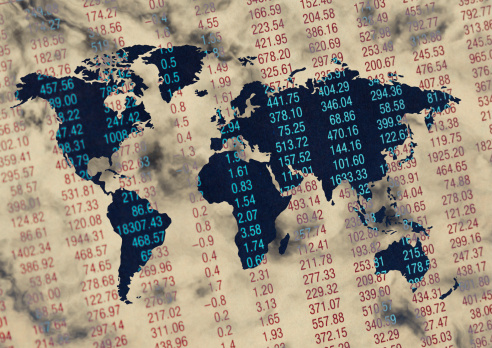Investing
OECD Offers Outlook and Suggestion for Returning Global Growth in 2013
Published:
The Organization for Economic Cooperation and Development (OECD) has issued a global growth report for 2013. While the global economy is said to be improving, the obvious drag pointed out was Europe.
The United States is considered a strength, and Japan adds a boost. Europe is shown to have slow growth or negative growth in the first half of 2013, and emerging markets are expected to again drive global growth this year. The OECD’s 10-page press handout showed the following:
- The global economy weakened again in late 2012, but activity is now picking up in many major economies. One-off factors played a role in the slow growth in the United States in the fourth quarter of 2012, leading to expectations of a rebound in the first quarter of 2013.
- The outlook in the first half of 2013 is for a return to moderate growth in the United States and an acceleration from low levels in Japan, boosted by the announcement of new policy measures.
- In Europe, a meaningful recovery is likely to take somewhat longer. Within the euro area, there is a renewed divergence between growth in Germany, which is likely to pick up strongly over the first two quarters of 2013, and that of other countries, which will remain slow or negative.
- Growth among emerging economies remains much faster than that of advanced countries on average, although with significant differences across countries. Given the substantial share of the world economy now accounted for by emerging economies, they will again drive growth at the global level this year. Annualised growth in China is expected to continue to be well above 8 per cent in the first half of 2013.
Today’s OECD report shows that the United States should grow by 3.5% in the first quarter and 2.0% in the second quarter of 2013. Japanese growth was put at 3.2% in the first quarter and 2.2% in the second quarter. As far as the full G7, that is now projected to have 2.4% growth in the first quarter and 1.8% in the second quarter of 2013.
The new interim OECD report even encourages more stimulus in Europe as well. It said:
In the euro area, there is still some scope to ease monetary policy further, given weak demand and inflation well below the ECB’s objective, while further action is needed to repair the transmission mechanism.
After two decades of reviewing financial products I haven’t seen anything like this. Credit card companies are at war, handing out free rewards and benefits to win the best customers.
A good cash back card can be worth thousands of dollars a year in free money, not to mention other perks like travel, insurance, and access to fancy lounges.
Our top pick today pays up to 5% cash back, a $200 bonus on top, and $0 annual fee. Click here to apply before they stop offering rewards this generous.
Flywheel Publishing has partnered with CardRatings for our coverage of credit card products. Flywheel Publishing and CardRatings may receive a commission from card issuers.
Thank you for reading! Have some feedback for us?
Contact the 24/7 Wall St. editorial team.